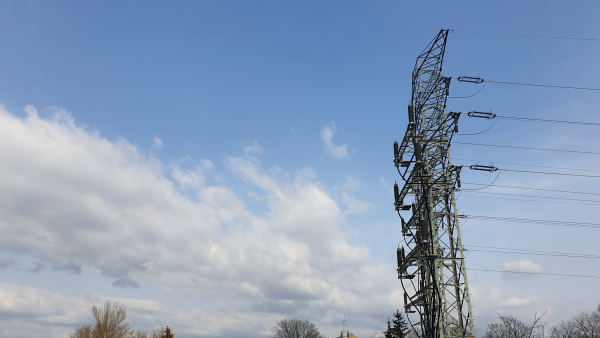
Something in the Air: 5G myths debunked
Notions that radiocommunication technology is gradually killing us are not anything new. Conspiracy theories have been around forever and it doesn’t look like they will disappear anytime soon.
Yes, 5G is officially here, and it promises to transform our daily lives by revolutionizing industries and the way we use our mobile devices.
The new technology is eventually slated to replace the present-day 3G and LTE/4G cellular telephone networks. It also promises to speed up the rate of data transfer by 100 times or more. However, this technology has increasingly become deeply controversial, not only among the general public, but also among some scientists.
There are several legitimate concerns regarding our health and the possible side effects of electromagnetic field (EMF) radiation which is emitted by base stations used in 5G technology.
Think you know everything about 5G? Let’s find out. In this article we’ll attempt to separate fact from fiction so you know exactly what to expect from this emerging technology in the coming year.
So, what’s true, what’s not. Let’s start with a fact-check.
What is 5G?
5G is the 5th generation mobile network - hence the number 5 in the name. It is a new global wireless standard following the previous 1G, 2G, 3G, and 4G networks. The technology enables a new kind of wireless network, which is specifically designed to connect virtually everyone and everything together. This includes not only people and their mobile phones, but also machines, appliances and other digital devices.
Is 5G REALLY faster?
Since data transmission speed is the benchmark for a wireless network’s performance, the claim is that 5G will substantially improve mobile internet. For a network to be referred to as 5G, its base station must meet certain standards set by the 3GPP cellular communications body. Currently, LTE is the fastest mobile technology available. It supports peak data rates of up to 300 megabits per second (Mbit/s). 5G technology has the potential to be significantly faster than 4G, by delivering speeds up to 20 Gigabits-per-second (Gbps). What does that all mean for the end user? These breakneck speeds mean an individual user could have the possibility to download a 600MB video in about 34 seconds, compared to roughly 2.3 minutes while using LTE technology. You can even download a full 8K movie 500% faster than with 4G LTE.
Is 5G interference reduced?
The amount of mobile devices as well as internet speeds have increased tremendously over the last several decades. As the radiofrequency spectrum becomes more and more crowded, and as frequency bands become very close to each other and sometimes even overlap, the chances for signals interfering with one another also increases. Additionally, the future, undoubtedly, will bring with it even more digital wireless devices, in addition to the countless low-powered radio transmitters you already own, like the one in your garage door opener & remote control, or key fob. Those items also send digital data and operate in the same environment as your laptop, mobile phone or WiFi router. Since our dependence on connected devices seems to be increasing with every passing year, avoiding radio interference has taken on greater urgency than ever before. A key feature of 5G is remote interference management which offers a standardized solution in order to automate mitigation of remote uplink interference at base stations.
What is the actual 5G bandwidth?
According to GSMA, 5G will bring wider bandwidths by expanding the usage of spectrum resources, from sub-3 GHz used in 4G to 100 GHz and beyond. A key feature of 5G is that it can operate in both lower bands (e.g., sub-6 GHz) as well as mmWave (e.g., 24 GHz and up), which means extreme capacity, multi-Gbps throughput, and low latency.
Will 5G offer much-reduced latency?
Latency is basically gap time, or to put it even more simply, the transmission time it takes to download a packet of data. 5G technology is specifically designed to significantly reduce latency. Overall, 5G technology is expected to provide a ten-fold decrease in end-to-end latency. This can considerably improve the current user experiences and even open the door to more innovative technology.
Now onto the fun part: 5G dangers debunked!
Is 5G actually harmful to your brain cells
This myth has its origins in 2000, when a graph by physicist Bill P. Curry (“Microwave Absorption in Brain Tissue'' [Grey Matter]) claimed to indicate that tissue damage increases with the rising frequency of radio waves. That one chart drove the myths that mobile phones cause cancer. His findings also showed a steep increase in microwave absorption by the brain at higher frequencies. This in turn has led to fears of 5G health risks. However, several studies have refuted his findings because Dr. Curry’s data looked only at exposed tissues in a lab, not cells deep inside our body. His research failed to take into account the “shielding effect” of human skin. Our skin has the ability to block out higher radio frequencies and protect our insides. Electromagnetic hypersensitivity (EHS) is a legitimate, serious and documented sensitivity to electromagnetic fields with some serious side effects. However, it’s worth noting that electromagnetic frequencies are produced by anything that uses electricity. This includes cell phones, TVs, computers, power lines, and microwaves. 5G technology works by using higher frequencies on the electromagnetic spectrum. The frequencies range from 3.5 gigahertz (GHz) to several tens of GHz. Prior to 5G being launched, these higher frequencies weren’t used in mobile networks. They are typically used in devices like modern computer processors, security scanners.
Read also: 5 Myths About Radiation You Should Stop Believing
5G dangers to humans and the 5G networks spread the coronavirus
Yes, this is a myth out there and despite sounding super ridiculous, this conspiracy theory gained some traction in the early days of the COVID-19 pandemic. However, as far as any research we could find, viruses do not yet have the ability to teleport and there is no truth to this myth. You can rest assured that a 5G tower will not give you covid.
Is 5G going to replace 4G?
Since 5G networks are built on top of the existing 4G and LTE networks, 4G and LTE networks will essentially provide the base for the current 5G infrastructure and because of that, won’t be going away anytime soon. To truly take advantage of everything that 5G has to offer, you will eventually need a 5G-compatible phone. However, since 5G networks are being built on top of rather than replacing the existing 4G and LTE infrastructure, you won’t need a new phone right away. All existing phones, including the Mudita Pure, will still be able to connect to 4G networks and function just fine.
Related stories

March is Sleep Awareness Month: Time to Reset & Rest
March is Sleep Awareness Month! Learn how sleep impacts health, focus & well-being, and get expert tips to reset your routine for better, healthier rest.

How to Sleep Better as You Get Older
Transform your sleep quality as you age with science-backed strategies. Learn natural solutions for better rest and create the perfect bedtime environment.

What is Blue Monday & How to Deal with Seasonal Blues
Feeling the winter blues? Discover how to overcome seasonal sadness with mindfulness, better sleep, limited screen time, and meaningful connections.
If you'd like to receive the best stories from our blog, keep up to date with our progress and get notified about our product releases and special discounts.